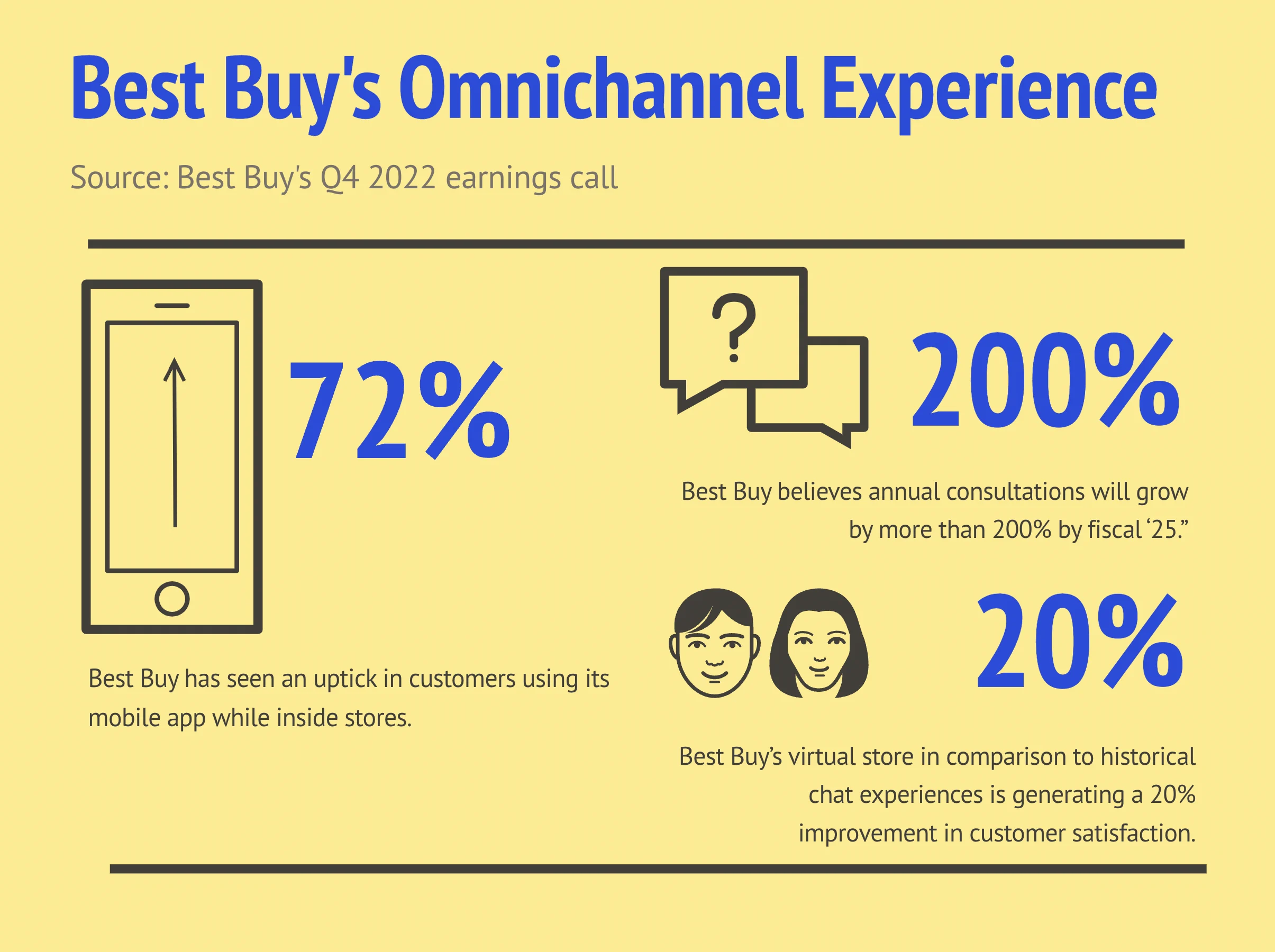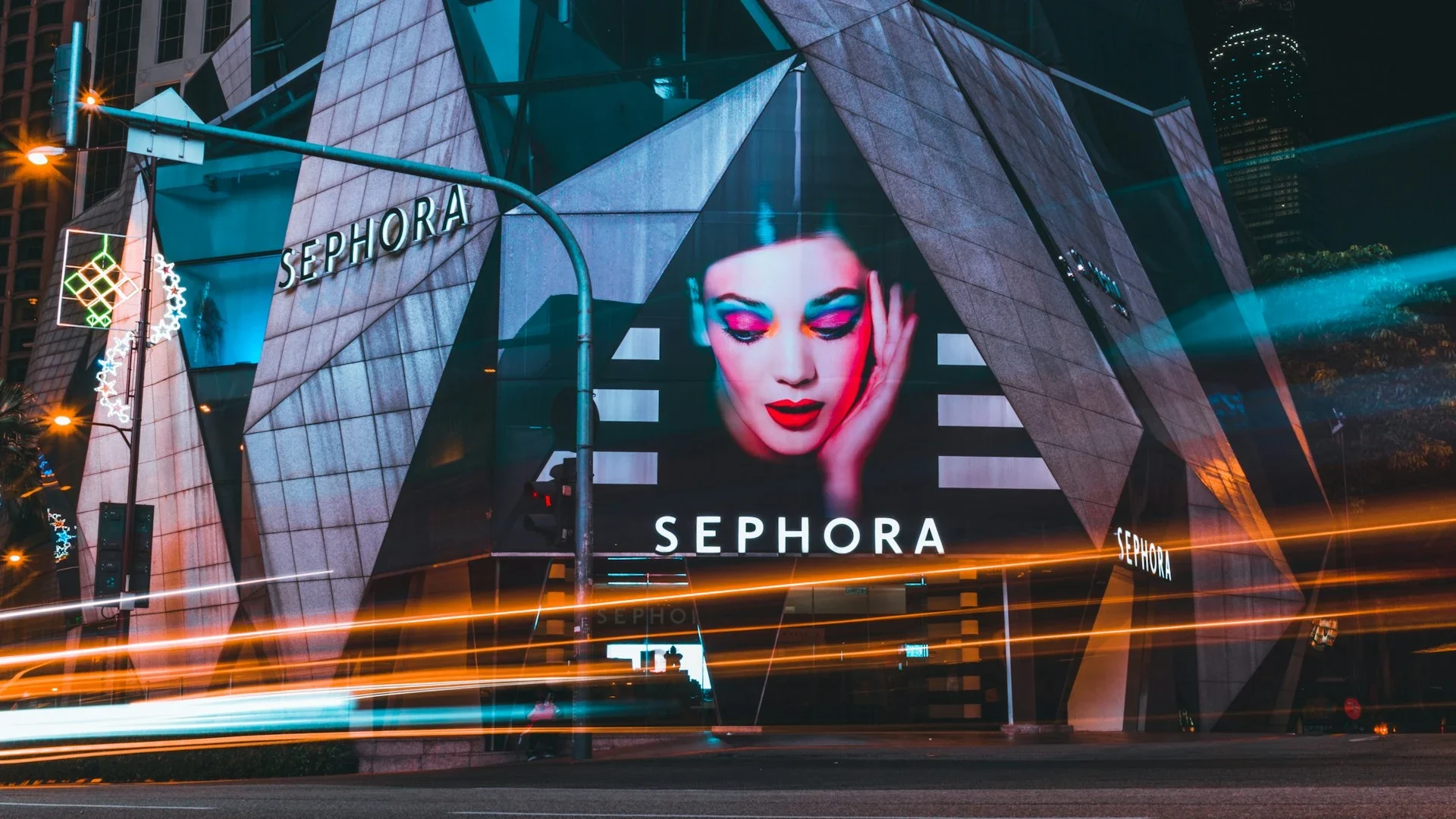- Customer Experience,
- Commerce
Exploring Omnichannel Strategies: 4 In-Depth Omnichannel Retail Examples


Omnichannel retailing has emerged as a game-changer. At its core, this concept is about providing customers with a seamless and integrated shopping experience, whether they're shopping online from a mobile device, a laptop, or in a brick-and-mortar store.
The omnichannel approach recognizes that customers engage with brands in myriad ways and aims to deliver a consistent, high-quality experience across all touchpoints.
The evolution of omnichannel retailing can be traced back to the rise of e-commerce and the digital revolution.
With the advent of the internet and, later, smartphones, the traditional boundaries between different shopping channels started to blur. Customers began demanding more flexibility and convenience, such as the ability to buy online and pick up in-store or to return online purchases at physical locations. This consumer-driven shift gave birth to the idea of omnichannel retailing.
Over the years, many successful brands have embraced omnichannel strategies, setting new standards for customer experience and redefining how retail business is done.
These examples span various industries and verticals, from fashion and electronics to beauty and groceries. They offer valuable insights into the techniques and strategies that make an omnichannel approach effective, as well as the benefits businesses can reap from implementing such a strategy.
Omnichannel Retail Examples Across Different Industries
1. Fashion Industry: Zara

In the world of fast fashion, Zara stands out not just for its trendy offerings, but also for its successful implementation of an omnichannel strategy.
The brand has seamlessly integrated its online and offline stores, enabling customers to check the availability of items in different stores, reserve items online for in-store pick-up, and even return online purchases at physical locations. Additionally, their mobile app allows customers to scan items in-store and find them online.
E-commerce Platform: Zara's comprehensive online store provides a platform for customers to browse and purchase its wide range of products.
Mobile Application: The company has developed a user-friendly mobile app that not only facilitates shopping but also keeps customers updated about product availability in stores and shipping status.
Physical Store Experience: Zara puts significant effort into ensuring a smooth and visually appealing in-store experience, offering an extensive assortment of products.
Quick-Fashion Strategy: Adhering to the fast fashion model, Zara consistently introduces new collections, swiftly adapting to evolving consumer trends and preferences.
Click-and-Collect Service: Zara offers a convenient option for customers to order products online and collect them from their nearest store, enhancing the overall shopping experience.
Technology Integration: With a focus on continuous innovation, Zara incorporates technology like RFID tagging into its retail spaces to streamline supply chain processes and enrich customer interactions.
Social Media Engagement: Zara maintains a robust presence across various social media platforms, enabling it to engage with its customer base and effectively showcase its product offerings.
This seamless shopping experience has proven to be a boon for Zara, helping it stay ahead in the highly competitive fashion industry.
2. Electronics Industry: Best Buy
Best Buy's journey to omnichannel success is truly inspirational.
Facing stiff competition from online retailers, the electronics giant decided to embrace the omnichannel approach.

Best Buy's successful omnichannel retailing strategy is evident in the significant growth of their online sales, which now accounts for 34% of the company's total domestic revenue. This impressive figure demonstrates how Best Buy has effectively leveraged digital channels to complement its physical stores, thus providing a seamless shopping experience for customers.
Further highlighting the company's successful digital transformation is the 150% growth in virtual interactions across video, chat, and voice. This suggests that customers are increasingly engaging with the brand through these digital touchpoints, reflecting the changing consumer behavior in the digital age. As noted by Damien Harmon, Best Buy’s EVP of Omnichannel, these virtual opportunities allow the company to offer immediate expert assistance to customers, regardless of their location.
Moreover, the fact that 84% of Best Buy customers use digital channels throughout their shopping journey underscores the importance of a cohesive omnichannel strategy. It shows that customers value the convenience and flexibility offered by digital channels, and they expect a consistent experience across all touchpoints.
Interestingly, Best Buy has also observed a 72% increase in customers using the Best Buy mobile app while inside stores. This practice, known as "showrooming," is a clear example of channelless retailing, where the boundaries between different shopping channels blur. It also presents an opportunity for Best Buy to integrate digital tools into their in-store experience further, enhancing customer engagement and satisfaction.
3. Beauty Industry: Sephora

Sephora, the beauty retail giant, has always been at the forefront of innovation. Their omnichannel strategy is no exception.
Through their "Virtual Artist" feature on the mobile app, customers can virtually try makeup products using augmented reality.
In physical stores, customers can use "Color IQ" devices to find the perfect foundation or lipstick shade.
These digital initiatives are complemented by a robust reward program that works seamlessly across all channels.
The result is an immersive, personalized shopping experience that has helped Sephora maintain its leading position in the beauty industry.
4. Grocery Industry: Walmart

Walmart, the multinational retail corporation, has made significant strides in blending its physical and digital operations.
The company has rolled out features like online grocery shopping with in-store pick-up or home delivery, mobile express returns for online purchases, and digital store maps for easier in-store navigation.
According to Forbes, ninety percent of Americans live within 10 miles of a Walmart. It turns out customers like to order goods online, then pickup up the bagged items in stores. This omni-channel, click and collect strategy gives consumers control, and lower prices. Click and collect e-commerce orders in 2021 reached $20.4 billion. Walmart accounted for 25% of those purchases, according to Brett Briggs, chief financial officer.
These initiatives have not only improved customer convenience but also led to a significant increase in Walmart's online sales, demonstrating the effectiveness of its omnichannel strategy.
Each of these examples illustrates how an effective omnichannel strategy can enhance the customer experience, boost sales, and give businesses a competitive edge.
They show that regardless of the industry or vertical, businesses can reap substantial benefits by adopting an omnichannel approach.
The Bottom Line
In the modern retail landscape, where consumers are increasingly tech-savvy and expect seamless shopping experiences, omnichannel retailing has emerged as more than just a buzzword; it's a necessary strategy for survival and growth.
Through examples like Zara, Best Buy, Sephora, and Walmart, we've seen how a well-executed omnichannel strategy can enhance customer experience, boost sales, and provide a competitive edge.
Zara's fast fashion model is bolstered by its online and offline integration,
Best Buy's survival story is credited to its digital transformation,
Sephora's personalized beauty experience is amplified by its technology integration, and
Walmart's customer convenience is enhanced by its blend of physical and digital operations.
These are not just success stories of individual brands; they are a testament to the significance of omnichannel retailing in today's market. They highlight that the consumer journey is no longer linear but a complex web of touchpoints, all of which need to be connected for a truly seamless experience.
So, if you're a business owner still contemplating whether to adopt an omnichannel strategy, consider this: omnichannel customers spend 4% more on every shopping occasion in the store and 10% more online than single-channel customers, according to a study by Harvard Business Review.
For every additional channel they use, customers spend more money in the store.
They are also more loyal, recommending the brand to others more often and showing a higher retention rate.
